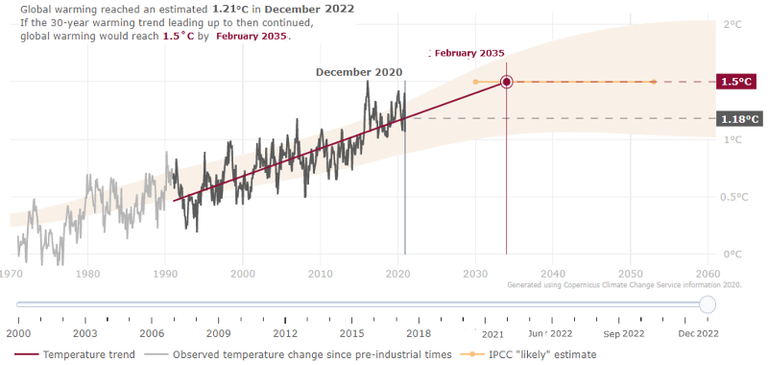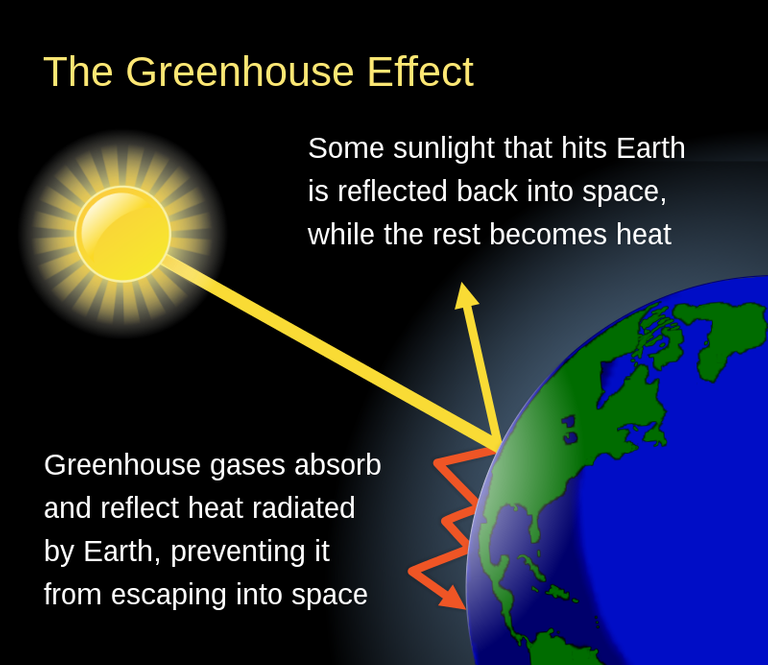This simple figure has been resonating a lot in recent years, especially at the climate negotiating tables. 1.5 °C is the global temperature increase that has been set as a limit compared to the pre-industrial era, although, this is not supposed to reverse global warming, it could at least help prevent the most devastating effects of climate change.

Exceeding this limit means facing greater environmental risks. Source: edited image, original from openclipart.org.
This limit was first introduced in the Paris Agreement in 2015, and although the objective pursued with this agreement is not to reach more than 2 °C compared to pre-industrial levels, the value of 1.5 °C was established as an aspiration, since warming the planet by more than 2 degrees could trigger extreme weather events, so the scientific community calls for further limiting this increase, and the value of 1.5 degrees was chosen since that has been the highest quality temperature that could be inferred that the planet has recorded in the last million years.
But if it is already difficult to limit global warming to 2 degrees, limiting it to 1.5 is even more difficult, even though 0.5 °C seems to make little difference, in terms of global climate it has a great influence, even that half a degree difference implies a difference of about 20 cm in sea level rise, which considerably affects coastal communities.
And to limit global warming to 1.5 °C by the end of the century, the volume of carbon dioxide emissions must be halved by 2030, but we are far from achieving this goal, as 2022 closed with a new record in CO2 emissions, with 40.6 billion tons.
If this rate is maintained, the 1.5 °C limit will be reached much earlier than the established target, closer than we think, as the Copernicus Climate Change Service (C3S) predicts that we will reach the 1.5 °C limit by 2035.

Screenshot from the Copernicus application. Source: Copernicus Climate Change Service.
According to this organization, the year 2022 has been the fifth warmest year worldwide since there are records of global average temperatures, and although its calculations vary according to new reports, with data from recent years it is projected that this limit will be reached within the first half of the next decade, which is not encouraging.
This news worries the UN's Intergovernmental Panel on Climate Change (IPCC), which has long called for reducing the massive emissions of CO2 and other gases, responsible for retaining heat in the atmosphere due to the greenhouse effect, and thus limiting global warming to 1.5 °C by the end of this century, and not now face the consequences of exceeding this level.

Green house effet. Source: Wikipedia.org.
But according to current data, perhaps soon the topic of debate will not be when this critical value will be reached, but rather on what will happen next and how we will manage to cool the Earth, since if it is difficult to curb global warming within the remainder of the century, measures to reduce the global temperature could take decades or even centuries.
The UN warns that efforts must be doubled in the next two years and points out that we must invest in developing solutions based on nature, such as sustainable agricultural practices, reforestation of forests, curbing soil degradation, protecting different ecosystems, use of solar energy and other renewables.
But, although scientists point out that it is physically possible to limit warming to 1.5 degrees Celsius, the truth is that in practice there are many interests involved that make it politically almost impossible.
Let us hope that, together with the scientific community, society in general will join the call to demand a reduction in greenhouse gas emissions, because if this rate continues, the most vulnerable communities will be the first to feel the impact of climate change.